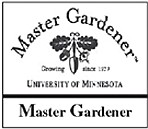April 7, 2005 at 7:35 a.m.
There are two species of moles in our area and I think I have seen both of them in my lawn. The common prairie mole is found mostly in the southern half of the state and the star nosed mole is found in the northern part of the state. Both are small, stout mammals about seven to eight inches long. Moles are often confused with mice, but they are not rodents. They lack the long, curved incisors teeth of rodents and are equipped instead with small sharp teeth. Their sharp teeth are suited for a diet of insects, grubs, and worms. They have small poorly developed eyes and ears.
The prairie mole favors drier upland soils that are loose and free of rocks. This is the mole that is the major problem in our area. It digs tunnels at several levels and can move through loose soil with surprising speed. The tunnels seen in lawns and open areas are feeding tunnels. Their nests and permanent residences are in tunnels six to eighteen inches beneath the surface. A mole hill results when it pushes soil up and out of a tunnel through a vertical shaft. This creates a circular mound with round ripple marks made by each new load of soil that is pushed out.
Moles are often blamed for the destruction of bulbs, seeds, and garden plants. However, they rarely consume plants or plant parts though they will occasionally take a few seeds. As they dig their tunnels in search of beneficial critters such as earthworms and harmful pests like grubs and other insect larval or adult insects, anything in their path is removed.
I really don't feel comfortable writing about mole remedies because so many are not very effective and those that are, are quite drastic. However, sometimes drastic measures become necessary.
Mole poisons sometimes create false impressions of being effective simply because they cause moles to abandon surface tunnels. A mole may leave the tunnels because of the odor of the bait or dry weather may force them to move on. However, since moles feed almost entirely on insects and worms, they don't go for poison grains.
Gas cartridges can sometimes be used successfully to fumigate a mole tunnel system. Cartridges should be lit and inserted quickly into the tunnel, one every 15 to 20 feet, and the tunnel sealed with a piece of sod. The moles will be killed if you catch them in their surface tunnels while you are fumigating. Cartridges are available at some hardware stores and garden centers. When using either poison or fumigation, read and follow all label instructions carefully for safety and best results.
There are many other so called cures for moles, and some of them may work for you. Trapping still seems to be the most effective and efficient method of mole control in terms of time and cost. At first glance, the highly specialized mole traps that are available look brutal and dangerous to the user. In fact, the sudden death of the mole in such traps is quite humane, and a reasonable amount of caution will prevent accidents to the trapper. Again, traps can be purchased from nurseries, hardware and farm supply stores. They can help you pick out the type of trap that is best for you and how to use them.
For more information on moles, contact the Extension Office a (651) 674-4417 or the Bell Museum at (612) 624-7083 or www.bellmuse um.or.g
+++++
The raspberry and asparagus plants have sold out, but there are a very few strawberry and blueberry plants left to preorder for spring planting. Call Jerry Vitalis at 651-257-4496 for more information or to place an order.
The Chisago County Master Gardeners are offering a new program this year––“Summer 2005 Flower Gardening Series.” Classes will be held on the second and fourth Thursdays in June, July and August, from 6:30-8 p.m., at Fairview Lakes Regional Health Care Center, in Wyoming. The cost is $4 per session or $15 for all six.





Comments:
Commenting has been disabled for this item.